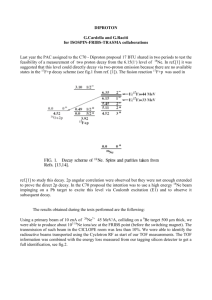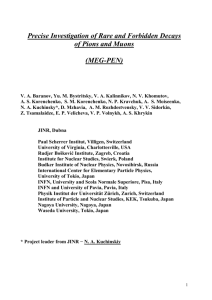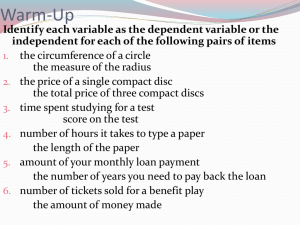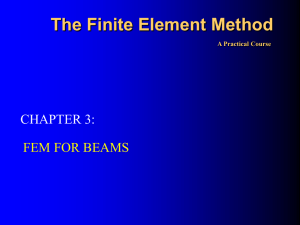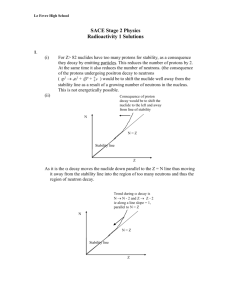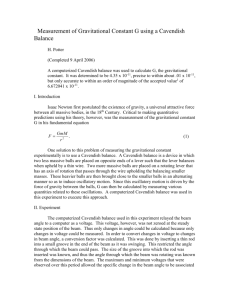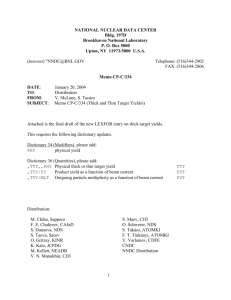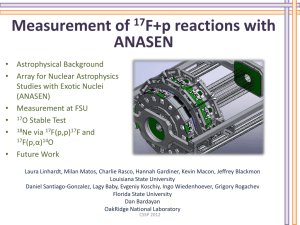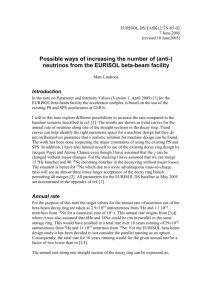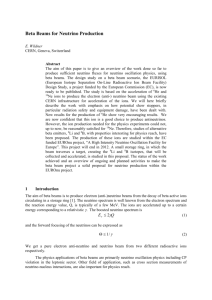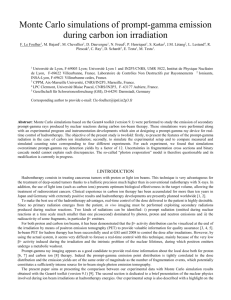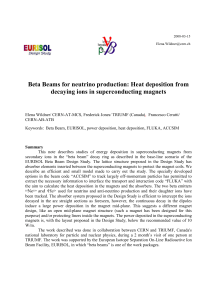Search for di-proton decay of 18Ne
advertisement
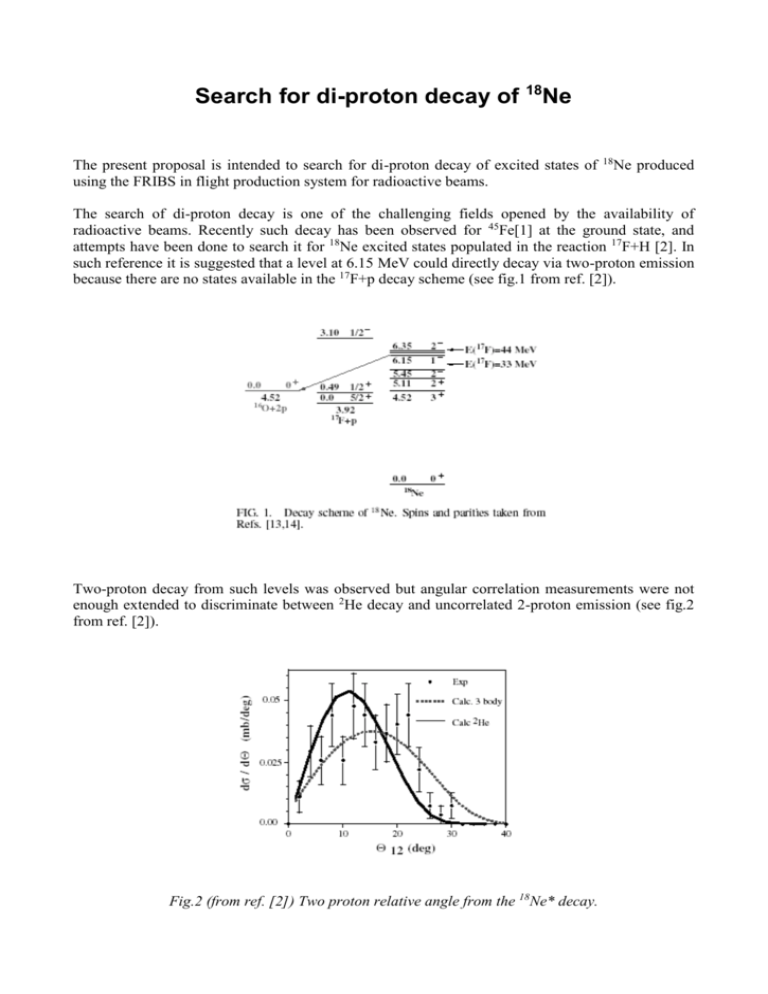
Search for di-proton decay of 18Ne The present proposal is intended to search for di-proton decay of excited states of using the FRIBS in flight production system for radioactive beams. 18 Ne produced The search of di-proton decay is one of the challenging fields opened by the availability of radioactive beams. Recently such decay has been observed for 45Fe[1] at the ground state, and attempts have been done to search it for 18Ne excited states populated in the reaction 17F+H [2]. In such reference it is suggested that a level at 6.15 MeV could directly decay via two-proton emission because there are no states available in the 17F+p decay scheme (see fig.1 from ref. [2]). Two-proton decay from such levels was observed but angular correlation measurements were not enough extended to discriminate between 2He decay and uncorrelated 2-proton emission (see fig.2 from ref. [2]). Fig.2 (from ref. [2]) Two proton relative angle from the 18Ne* decay. In another experiment performed at Ganil to observe the decay of 19Mg, the two proton decay of 18 Ne was also seen but no evidence was found for the 6.15 level (the beam energy was 36 MeV/A and 9Be was used as target, the spectrometer set-up was not optimised for 16O detection)[3]. We want to use a beam of 18Ne, produced by fragmentation using the FRIBS fragment separator at LNS. For the first test the beam, tagged by using one silicon strip double side detector, will be send to the TRASMA scattering chamber where will be mounted an array of 80 silicon – CsI detectors 1x1 cm2. Tests without target in the scattering chamber will be performed to measure the production rate and the tagging performances of the system. Using different targets we will try to evaluate the cross section for the excitation of the interesting levels. Gamma rays will be also detected in coincidence to help in the identification of the involved levels. In a second test, we will search for events with detection of 16O and 2 protons in coincidence. Protons will be emitted in a narrow kinematical cone (for protons of 800 keV in the CM the opening angle should be around +-8° if we start with a 18Ne beam around 600 MeV). At this stage it will be important an evaluation of the branching ratio to understand the beam time necessary to perform the final measurement. For this last measurement we will probably use CHIMERA. With such detector eventually implemented at 0° with more telescopes, we will be able to do angular correlations of protons using its rather good forward angles granularity (=1-2° up to 10° in the lab, the larger resolution has not a too strong influence in the determination of the relative emission angle). Such correlations are in fact necessary to disentangle between sequential or direct democratic emission of the two protons and the 2He correlate emission [2,3]. In ref. [2] using a fusion reaction a branching ratio of the order of 10 -3 was evaluated for the decay of the 6.15 level. Using a thick Pb target (200 mg/cm2) assuming 100mb as the order of magnitude of the cross section for coulomb (E1) excitation of the involved level, with 104 18Ne particles/sec beam intensity one could evaluate a counting rate of the order of few counts/hour. Such beam intensity should be obtained, following LISE simulations, using 10 enA of 20Ne cyclotron beam impinging on a 200mg/cm2 9Be target. This yield is computed assuming that will be operational the new more powerful quadrupoles already available for the beam line. In the first test that we want to perform we will understand if such simulations are reliable and if we can obtain a good tagging for such relatively light ions as already obtained in previous FRIBS tests. Obviously the use of FRIBS will allows the observation of many other reactions, because many beams will be produced and transported at the same time. This can produce unexpected background on the searched events however it can give some other good opportunities (for instance one could also look to 17Ne, or 17F nuclei interesting for proton halo studies). This also needs a test. We ask therefore for two test beams of 9 BTU each one separated by 2 months (for set-up adjustments) to be performed during 2004 in the periods available for cyclotron beams. 3 additional BTU are necessary for each test without beam to have a complete access along the beam lines before the switching magnet to mount and set-up detectors and electronics for transport efficiency measurements. The 20Ne primary beam energy required is 50 MeV/A useful to minimize the energy loss and straggling in the target and maximize the efficiency for Coulomb excitation. With this energy we will have a reasonable compromise between the reaction yield and the kinematical focussing of the reaction products that will reduce our resolution. REFERENCES [1] J.Giovinazzo et al Phys. rev. Lett. 89(2002)102501; B.Blank et al C.R. Physique (2003)4 [2] J.Gomez del Campo et al; Phys.Rev.Lett 86(2001)43 [3] T.Zerguerras; Orsay - doctorate thesis

